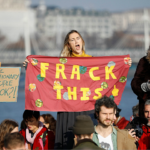Earlier this year, the Los Angeles Times touted a remarkable turning point in California’s war against fossil fuels: the state reached 95 percent renewable energy.
The article discussed what seemed like a “faraway” possibility of someday reaching 100 percent clean power through wind, solar, biomass, geothermal and hydroelectric means, and noted perhaps this dream isn’t as far away as we thought.
After all, California — one of the world’s largest economies — had not only acquired amounts of solar energy astounding enough to sell to other states, but had finally reached a 94.5 percent renewable energy rate, right? Months later, the outcome isn’t as lustrous as it seemed.
The California Independent System Operator confirmed the milestone, which lasted only four seconds and was, according to the newspaper, “specific to the state’s main power grid, which covers four-fifths of California but doesn’t include Los Angeles, Sacramento and several other regions.”
Though the development ideally meant that renewable resources would replace fossil fuels, the change is not without its shortcomings.
Especially as blackouts threaten the Golden State.
Earlier this month, California Public Utilities Commission President Marybel Batjer, California Energy Commission Chair David Hochschild, and California Independent System Operator CEO Elliot Mainzer released a joint statement, requesting supplemental energy resources to “ensure electricity reliability this summer.”
Essentially, these words translate to a request for outside energy resources to combat a sweltering West Coast summer which has depleted hydroelectric capacity (one of the state’s renewable energy sources) and prompted residents to increase demand where there is a limited supply.
In the letter, the ISO chalked up the state’s heatwave as “climate change-driven,” and stated that the CPUC, the CEC and the ISO had each taken “significant steps in recent months to better prepare [California’s] electric grid for this new climate reality,” ensuring that work is ongoing.
Do you blame California’s renewable energy resources for state blackouts?
Yes: 97% (35 Votes)
No: 3% (1 Votes)
Was the L.A. Times right to tout the state’s renewable resource reliance?
The Times article included a line graph of the state’s power supply at three-hour intervals for April 24 and unintentionally demonstrated one shortcoming of solar reliance.
“That green line at the top is renewables,” it reads. “You can see how it jumps up in the morning and falls in the evening, reflecting sunrise and sunset.”
During the hours solar radiation reaches its peak performance, renewable resources also reach their peak. After dark, however, the number of megawatts dips significantly and the state shifts its reliance to natural gas.
Though the amount of acquired solar and wind energy may have been sufficient a few months ago, were state officials planning ahead into the summer?
Solar power is a clean and unique breed of renewable energy, of course, and being able to rely on solar energy to satisfy our needs nationwide would be ideal.
It’s unsustainable at this point, however, and California reiterates that much with their example.
“California has lots of clean power. The important thing now is making sure the puzzle pieces of the grid fit together on hot summer evenings, like the ones last August when insufficient supplies after sundown led to rolling blackouts,” the Times article added.
But was California prepared to dive into the change headfirst?
According to Slate, solar power’s disadvantages are partially to blame for the state’s blackout dilemmas.
“Solar power, of course, is well matched with high demand for air conditioning in the middle of the day. That advantage disappears when the sun goes down but the temperature doesn’t,” the source reads.
“Distributed and centralized electricity storage technologies can shift some power generation toward later in the day. But lithium-ion battery systems are usually designed for only a few hours of storage—enough to accommodate much of the daily swings in solar generation, but not the type of extreme surges in demand we’ve seen this week [in August 2020].”
Slate goes on to mention how days-long storage technologies could help the state’s renewable energy focus, but adds that these solar farms would likely require seasonal storage technology instead.
It’s safe to say California rushed into the renewable energy age too quickly, eager to disregard energy diversity in favor of sending a message to the rest of the country about the state’s priorities.
Without enough sustainable battery systems, panels or cables, the Golden State’s dream of 100 percent renewable energy from solar reliance is a dream that won’t come true.






